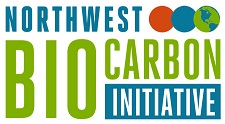Bringing Nature into Cities Is Good for You and the Planet
Cool examples of the practical benefits of maintaining--or reintroducing--natural elements and environments into our urban landscapes.

This Climate Solutions program is no longer active.

The Northwest Biocarbon Initiative elevates the essential role that natural systems play in reducing carbon dioxide (CO2) in the atmosphere. By galvanizing the region’s emerging biocarbon community to develop strategies that increase natural carbon capture and build a vibrant restoration economy, we are positioning the Northwest as the nation’s leading incubator for biocarbon solutions.

By: Dominick DellaSala on
Since forests absorb and store vast amounts of carbon, protecting forests, especially old growth forests like those in the Pacific Northwest, should be a key component of any plan to mitigate the effects of climate change.

By: Patrick Mazza on
The health of forests and their owners are directly connected, an insight that has generated an innovative Oregon program to increase forest carbon.

By: Patrick Mazza on
Good-paying jobs that produce multiple products in rural communities where good jobs have been scarce – This is the restoration economy. In Oregon the restoration economy created 6,483 jobs, generated $977.5 million in economic activity from 2001–2010, a new report from Ecotrust says.

By: Patrick Mazza on
Do frightened grasshoppers increase carbon storage in grasslands? It appears the answer is yes, according to Yale Forestry School research. But the reason for this phenomenon might not be what you think.

By: Patrick Mazza on
Farm support programs that target only food production miss huge opportunities to generate natural benefits, a new British study documents.

By: Patrick Mazza on
The message is spreading that changing the way agriculture is done can draw heat-trapping carbon dioxide out of the atmosphere into farm soils to improve the viability of agriculture overall.

By: Eileen V. Quigley on
On August 1, the City of Portland graciously hosted the Northwest Biocarbon Initiative (NBI) along with our partners at Ecotrust and the

By: Patrick Mazza on
Outside of humans, beavers have more impact on landscapes than virtually any other species. Now a new study reveals those hardworking animals not only build dams but biocarbon storage as well.

By: Eileen V. Quigley on
A capacity crowd of 160 thought leaders and innovators gathered on June 10, 2013 at the University of Washington's Center for Urban Horticulture in Seattle for the first-ever Northwest Biocarbon Summit.

By: Rhys Roth on
One of the special highlights at the Northwest Biocarbon Summit–for me and many others–was a remarkable series of “Speed Talks” by real-world Northwest practitioners who brought to life the full portfolio of biocarbon solutions.
Join our email list to learn about what we do and how to get involved.
Cool examples of the practical benefits of maintaining--or reintroducing--natural elements and environments into our urban landscapes.
A new methodology enables emission reductions from biochar in the U.S., developed jointly by The Climate Trust in partnership with the International Biochar Initiative, Prasino Group, and Carbon Consulting.
If the Earth’s vegetation were not absorbing tremendous amounts of carbon dioxide from the atmosphere, the climate would be much hotter and have already crossed highly dangerous thresholds.
Since forests absorb and store vast amounts of carbon, protecting forests, especially old growth forests like those in the Pacific Northwest, should be a key component of any plan to mitigate the effects of climate change.
Soaking carbon from the atmosphere into farm soils is a widely advocated climate solution. A new Australian study kicks dirt all over the idea. But digging in a little deeper uncovers a more favorable picture.
It’s happening in our urban and rural forests, in and around our buildings and streets, on our farmland, and in the seagrass meadows, salt marshes and mangroves along our coasts. Done right, it just might stem the tide of runaway climate change.
The health of forests and their owners are directly connected, an insight that has generated an innovative Oregon program to increase forest carbon.
Good-paying jobs that produce multiple products in rural communities where good jobs have been scarce – This is the restoration economy. In Oregon the restoration economy created 6,483 jobs, generated $977.5 million in economic activity from 2001–2010, a new report from Ecotrust says.
The Pacific Northwest possesses a singular regional identity, one of the strongest in North America. A large portion of the population is here by choice. But what draws the region together? What are the roots of this identity?
Do frightened grasshoppers increase carbon storage in grasslands? It appears the answer is yes, according to Yale Forestry School research. But the reason for this phenomenon might not be what you think.